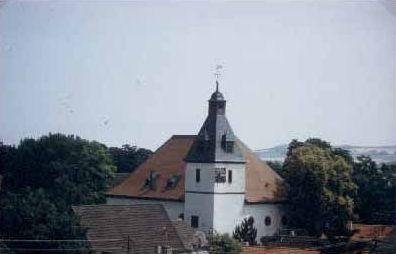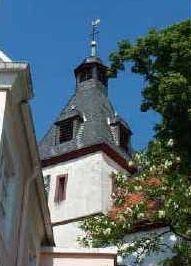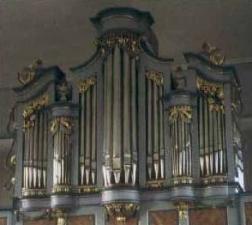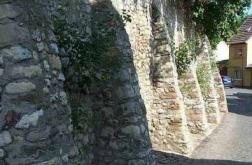Protestant Church

As early as 1070 a church consecrated to St. Martin was mentioned for the first time. In 1417 there were three altars (high altar, the Virgin Mary altar and St. Nicholas altar) in the parish church. In 1430 the three-part choir and in 1502 the steeple were renovated. In 1790 the house of God was pulled down and in 1790/91 rebuilt and enlarged.
The three-storey steeple dates from different times of construction. The first and second storeys are Gothic. The lower was once arched, proven by the brackets with the base of the ribs in the corners. The slender portal with the pointed arch, which once led into the old, small church, was bricked up but can still be seen in the east wall.
The upper storey is built with limestone from our region and has a tent-shaped roof. The present steeple structure also dates back to the year 1791. It was not until 1813 that the finishing work of the interior could be started as there were quarrells about costs.
In 2001 both windows behind the altar were replaced. The artist Robert Münch from Groß-Umstadt created the new colourful church windows.
Steeple

From the middle of the 15th century till the end of the 18th century the obligation to build the different parts of the church was split: choir and nave had to be erected and maintained by the Domstift (collegiate church) in Worms whereas the municipality of Eppelsheim was responsible for the steeple.
In a contract between the town council and the Protestant (parochial) church council in 1903 the church steeple was transferred to the parish. The obligation to erect a new building has since been with the parish while the maintenance of the steeple has remained with the municipality as it has been since the Middle Ages. The bells and the clock inside the steeple are property of the municipality.
Stumm Organ

The baroque organ built by the famous organ builder Franz Stumm from Rhaunen-Sulzbach in the Hunsrück mountains was first played on 18th December 1815.
The organ has 17 stops with 972 pipes. The biggest one is 2.80 m long and made of tin.
After the Second World War the organ was in very bad condition. Thanks to the excellent restoration by the organ builders Oberlinger Bros. in 1971, our organ now represents, with its fine and rich tone, the original ideal sound intended by its creator.
Churchyard Wall

Up to the year 1848 the cemetery (churchyard) was right beside the church and both were surrounded by a high limestone wall. In 1981 the churchyard wall with its 13 supporting pillars was costly adjusted to match the beautifully situated church which is also listed for preservation. The restored wall and the church form a fine ensemble.



